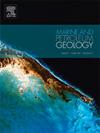Inconsistencies in stratigraphic interpretation and correlation – Comments on “depositional cyclicity of lower Cambrian strata in the NW Himalayas: Regional sequence stratigraphy of the Indian passive margin” by Mahmood et al. (2024)
IF 3.7
2区 地球科学
Q1 GEOSCIENCES, MULTIDISCIPLINARY
引用次数: 0
Abstract
This article comments on a recent study by Mahmood et al. (2024) on the lower Cambrian strata across the NW Himalaya. While providing a detail sequence stratigraphic framework, the authors fail to adequately considered recent developments in the Cambrian chronostratigraphic framework of the Himalaya and misinterpreted the age of rock successions, which currently range from late Cryogenian to middle Cambrian, as “Lower Cambrian” (ca. 538-512 Ma). This stratigraphic discrepancy introduced considerable confusion, disrupting the recently revised and established late Neoproterozoic to early Cambrian stratigraphic framework across the Himalaya. Consequently, this necessitates a reevaluation of their inferred depositional history and sequence stratigraphic interpretation, as these misinterpretations directly impact the timing, duration, and correlation of depositional events and sea-level changes they described. Present comments seek to address key stratigraphic uncertainties identified in the study by Mahmood et al. and offer clarity to the conflicting interpretations based on more appropriate references related to the chronostratigraphic aspects of the commented paper. This effort not only contextualized rock units being discussed within their established stratigraphic context but also facilitated future research on more precise correlation and subdivision of the late Neoproterozoic-early Cambrian strata at both regional and global scales.
地层解释和对比的不一致——评Mahmood等人(2024)的《西北喜马拉雅下寒武统地层沉积旋回性:印度被动边缘的区域层序地层学》
本文评述了Mahmood et al.(2024)最近对喜马拉雅西北部寒武系下地层的研究。在提供详细的层序地层格架的同时,作者没有充分考虑到喜马拉雅地区寒武系年代地层格架的最新发展,并将岩石序列的年龄错误地解释为“下寒武系”(约538-512 Ma)。这种地层差异带来了相当大的混乱,破坏了最近修订和建立的横跨喜马拉雅的新元古代晚期至早寒武纪地层格架。因此,这需要重新评估他们推断的沉积历史和层序地层解释,因为这些错误解释直接影响了沉积事件的时间、持续时间和相关性,以及他们所描述的海平面变化。目前的评论试图解决Mahmood等人在研究中确定的关键地层不确定性,并基于与评论论文的年代地层方面相关的更适当的参考资料,为相互矛盾的解释提供澄清。这项工作不仅使岩石单元在其已建立的地层背景下进行讨论,而且有助于未来在区域和全球尺度上对新元古代晚期-早寒武纪地层进行更精确的对比和细分。
本文章由计算机程序翻译,如有差异,请以英文原文为准。
求助全文
约1分钟内获得全文
求助全文
来源期刊

Marine and Petroleum Geology
地学-地球科学综合
CiteScore
8.80
自引率
14.30%
发文量
475
审稿时长
63 days
期刊介绍:
Marine and Petroleum Geology is the pre-eminent international forum for the exchange of multidisciplinary concepts, interpretations and techniques for all concerned with marine and petroleum geology in industry, government and academia. Rapid bimonthly publication allows early communications of papers or short communications to the geoscience community.
Marine and Petroleum Geology is essential reading for geologists, geophysicists and explorationists in industry, government and academia working in the following areas: marine geology; basin analysis and evaluation; organic geochemistry; reserve/resource estimation; seismic stratigraphy; thermal models of basic evolution; sedimentary geology; continental margins; geophysical interpretation; structural geology/tectonics; formation evaluation techniques; well logging.
 求助内容:
求助内容: 应助结果提醒方式:
应助结果提醒方式:


